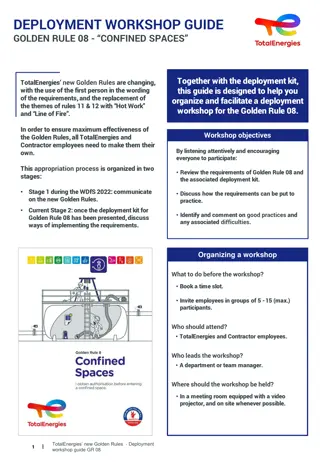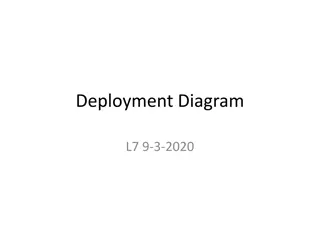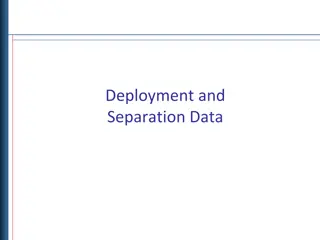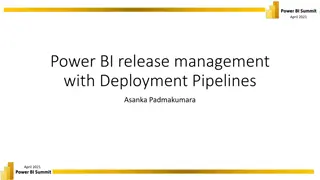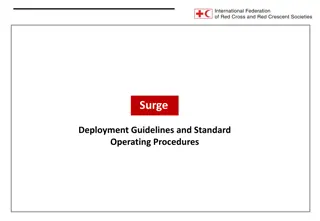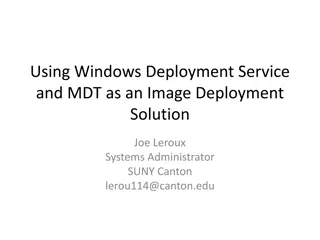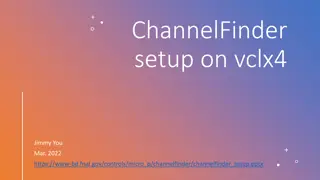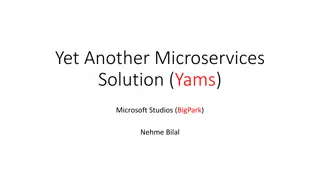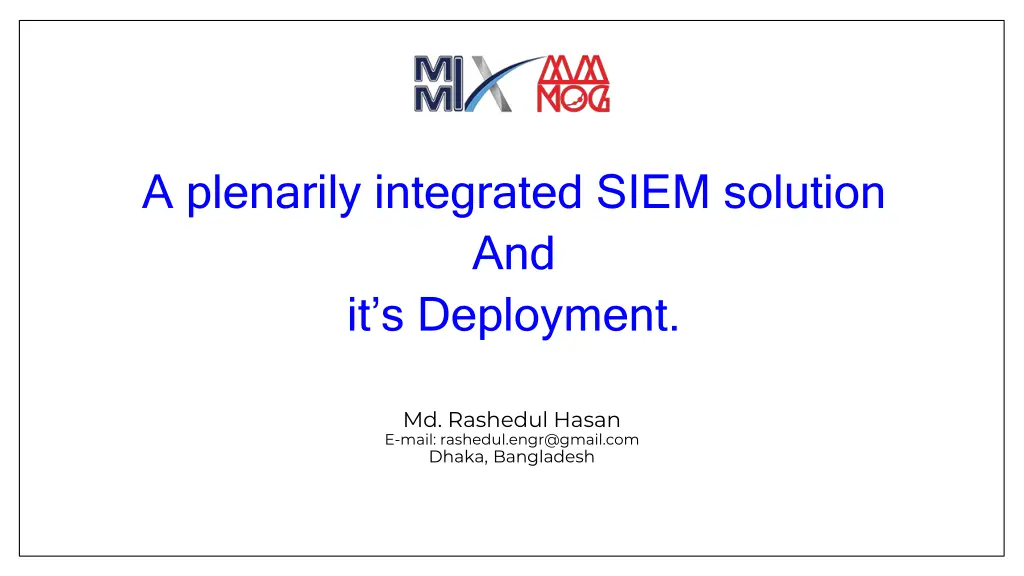
Integrated SIEM Solutions Deployment
Enhance your security operations with a plenarily integrated SIEM solution by Md. Rashedul Hasan from Dhaka, Bangladesh. Explore the capabilities of SIEM solutions in detecting and responding to threats, understand why Wazuh SIEM is a popular choice, learn about integrations with Microsoft 365 and more, and discover the deployment options for Wazuh SIEM. Get ready to install Wazuh on various operating systems with necessary hardware and software requirements.
Uploaded on | 2 Views
Download Presentation

Please find below an Image/Link to download the presentation.
The content on the website is provided AS IS for your information and personal use only. It may not be sold, licensed, or shared on other websites without obtaining consent from the author. If you encounter any issues during the download, it is possible that the publisher has removed the file from their server.
You are allowed to download the files provided on this website for personal or commercial use, subject to the condition that they are used lawfully. All files are the property of their respective owners.
The content on the website is provided AS IS for your information and personal use only. It may not be sold, licensed, or shared on other websites without obtaining consent from the author.
E N D
Presentation Transcript
A plenarily integrated SIEM solution And it s Deployment. Md. Rashedul Hasan E-mail: rashedul.engr@gmail.com Dhaka, Bangladesh
SIEM & its Capabilities SIEM Capabilities SIEM solution is an essential piece of a security operations center (SOC) toolkit. SIEM solutions collect data from across an organization's security architecture and alert about attacks, enabling rapid detection and response to threats. Security Log Analysis Vulnerability Detection Vulnerability Detection Security Configuration Assessment Regulatory Compliance 2
Why Wazuh SIEM? Wazuh is a free and open source security platform that unifies XDR and SIEM capabilities. It protects workloads across on-premises, virtualized, environments. Wazuh helps organizations and individuals to protect their data assets against security threats. containerized, and cloud-based Some of the more common use cases of the Wazuh solution- Intrusion detection Log data analysis File integrity monitoring Anomaly and Malware detection Vulnerability detection VirusTotal integration Configuration assessment Incident response Regulatory compliance (NIST, PCIDSS, GDPR, NIST, TSC and HIPAA) IT Hygiene Cloud security Containers security Posture Management Workload Protection 3
Integrations Microsoft 365 and Microsoft 365 Defender Malware Detection with Virultotal with Active Response Malware Detection with Yara with Active Response SSH brute-force detection with Active Response Monitoring malicious command using aduitd Suricata integration for IDS Building IOCs file threat intelligence LimeRAT detection with active response Thehive integration for incident response Cortex Integration with Thehive for observable analysis 4
WAZUH SIEM Deployment Wazuh can be deployed in two ways: - All In One: Wazuh Server and ELK Stack are installed and configured on the same system. - Distributed: Each component is setup on a seperate Server. SIEM Cluster Deployment Standalone SIEM Deployment S1 S1 SIEM Load Balancer S2 S2 SIEM SIEM S3 S3 Event Flow Event Flow 5
Preparing for the Installation Operating System: Wazuh can be installed on various operating systems, including CentOS, Debian, Ubuntu, Windows, and macOS. Hardware Specifications: Hardware requirements highly depend on the number of protected endpoints and cloud workloads. Software Dependencies: Wazuh requires several software components, including Elastic Stack, Filebeat, and Wazuh Manager. Elastic Stack is a set of open-source tools for data processing and analysis, including Elasticsearch, Logstash, and Kibana. Filebeat is a lightweight agent that collects log data from different sources and forward it to Elasticsearch. Wazuh Manager is the central component of the Wazuh architecture, which receives data from the Wazuh Agents and processes it to generate alerts and notifications. 6
Step-by-Step Installation Step 1: Set Up Wazuh Server Install Wazuh Install Wazuh Manager Install Elasticsearch Install Filebeat Install Kibana WAZUH SEIM Linux Server 7
Step-by-Step Installation (Cont.) Step 2: Install and Configure Wazuh Agents Windows Host Configure Windows Agent into Windows Host Configure Windows Agent into Linux Host Switch Linux Host 8
Step-by-Step Installation (Cont.) Step 3: Install and Configure Syslog Server Syslog Server Configure Linux Server as a Syslog Server Configure Wazuh Agent into this Syslog Server Linux Server 9
Step-by-Step Installation (Cont.) Step 4: Configure Network Devices to Send the Log to the Syslog Server Set the Destination Address to Send the Log from the Devices to Syslog Server. Check the Incoming Logs From the Syslog Server. Configure Wazuh Server to Receive the Log From the Wazuh Server. Check the Incoming Logs for Syslog Server Router Step 5: Configure Security Event Collection Step 6: Enable Real-time Monitoring and Alerting Step 7: Perform Regular Log Analysis and Incident Investigation Step 8: Continuously Enhance Security Posture Syslog Server Firewall 10
Complete Diagram with Wazuh SIEM Windows Host Router WAZUH SEIM Syslog Server Switch Switch Firewall Linux Host 11
Data Flow between Wazuh and connected devices. Windows Host Router WAZUH SEIM Syslog Server Firewall Linux Host 12
Agents overview All configured Host (Agent) is showing into the Agents List with Active, Disconnected, Pending Never Connected List. 14
Security Events Monitoring (Failed Login Attempts) 15
Security Events Monitoring (Successful Login Attempts) 16
File Integrity Monitoring Dashboard - - - - Identifying changes in context, permissions, ownership & attribute Graph view of modified, added and deleted files over time Use case of detecting threat Use case of regulatory compliance like ISO 27001, NIST 800-53 17
VirusTotal Integration - - - Real Time Virus and malware detection Effective way of inspecting monitored files for malicious content Manager & Endpoint both needs manual integration remediation 18
VULNERABILITY DETECTION: Discover vulnerabilities of OS and applications installed on the monitored endpoints and matches to CVE & CVSS Automatic vulnerability detection and assessment External vulnerability feeds indexed by National Vulnerability Database (NVD), Canonical, Debian, Red Hat, Arch Linux Advisories Security (ALAS), Microsoft. Office 365 Integration: Event Severity Graph Phishing and Malware Information User Activity Information MITRE ARR&CK - Review MITRE ATT&CK techniques in environment mapped to problem reports - MITRE tactics and their associated techniques - Alert evolution by Graph 19
Security Configuration Assesment: - Scan to detect misconfiguration and exposures, based on CIS controls - Recommends remediation action Container Security: Providing Comprehensive visibility into container resources Capability to audit Kubernetes Infrastructure 20

